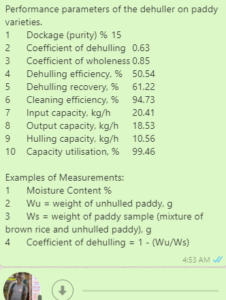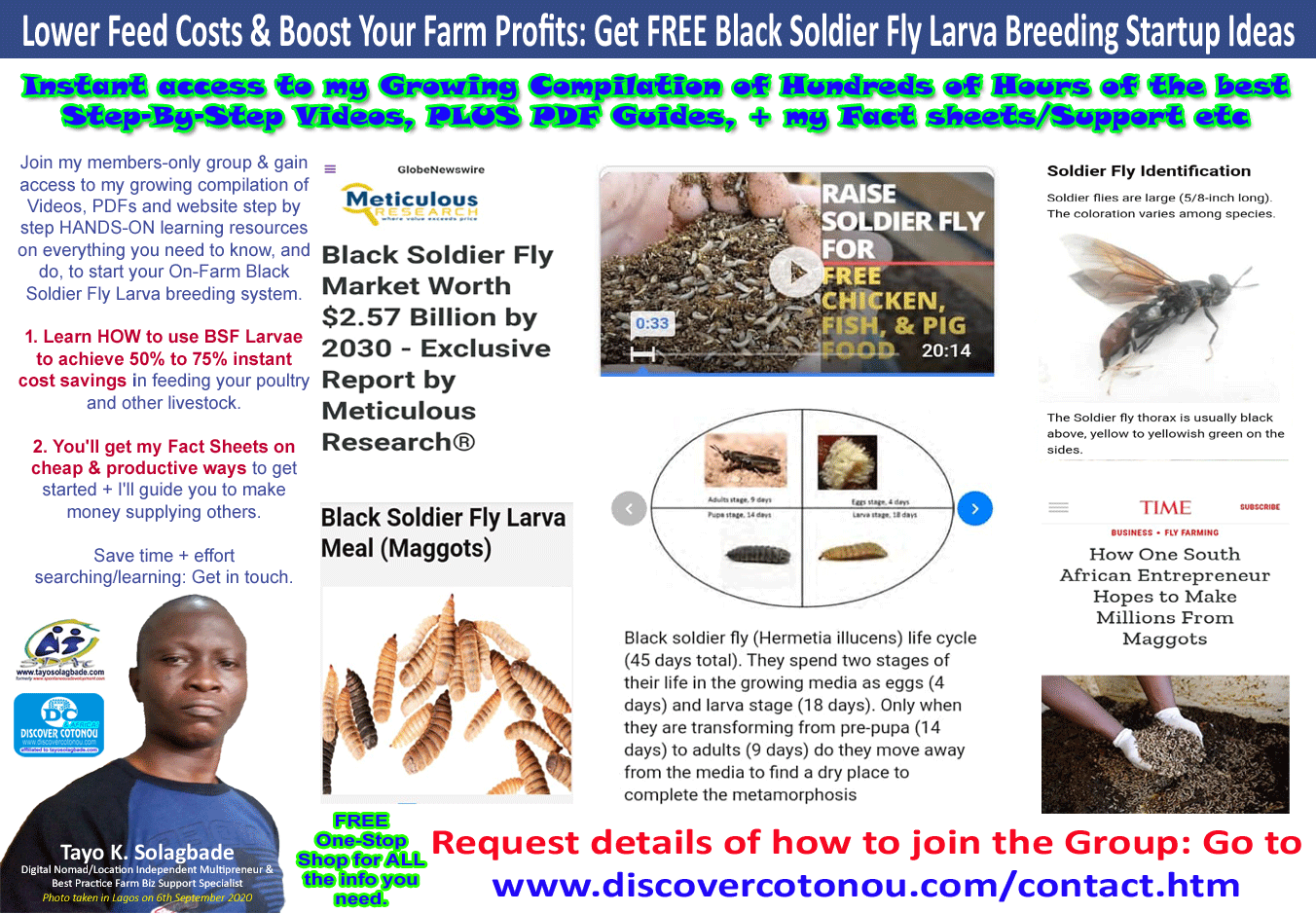This research paper from way back in 2016 provides – yet again – research based proof that Black Soldier Fly is versatile in a potentially limitless way!
Just this morning (18th December 2020) I was thinking about the fact that the BSF’s amazing bioconversion potential could be profitably applied – with multiple benefits – to the rice milling factory waste output for a Nigeria based client, for who I’m building an Excel-VB Enterprise Information System (EIS) to auto-compute Factory KPIs (see KPIs being considered in screenshot below).
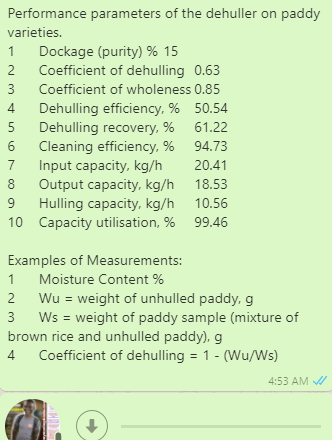
Suddenly, the idea occurred to me to do a Google search to see if anyone had actually tried using the BSF along those lines.
Not surprisingly, this (above featured) study was just one of several promising results I ended up with on the first page. I dare say with regard to what you can do with the BSF, it’s almost as if one just has to THINK it and it turns out to be possible!
No need for me to say more. Read the excerpts from the PDF posted below, and click the link at the bottom to download and read the full study findings.
Bioconversion of Rice straw waste by black soldier fly larvae (Hermetia illucens L.) : Optimal feed rate for biomass production
Abstract This study focuses on the application of black soldier fly larvae (Hermetia illucens L.) as a bioconversion agent of the rice straw to reduce amount of waste while in the same time produced larvae biomass.
In this study, larvae were fed with rice straw at six different feed rates (12.5, 25, 50, 100, and 200 mg/larvae/day) until larvae reached prepupal stage.
During study, relative growth, relative consumption rate, and waste reduction level were measured.
Daily feeding of 200 mg of grinded rice straw per larvae resulted in the highest prepupal dry weight (15.59 ± 0.01 mg), lowest developmental time (39 ± 0.1 days), but lowest waste reduction efficiency (10.85 ± 0.0005%).
Highest waste reduction efficiency was recorded by larvae feed rate of 12.5 mg/larvae/day (31.53 ± 0.01%) and decreased with higher feeding rate.
This study showed the possibility of production of insect larvae biomass as through bioconversion process of agricultural waste rich with lignocellulose.……
Conclusion
In brief, black soldier fly larvae has the ability to digest and survive when fed with raw rice straw. Survivorship of larvae, biomass produced, and time of development positively are related to the amount of feeding material provided to the larvae. However, larvae provided with large amount of feeding material consumed less fraction of substrate which is not beneficial in term of application for waste reduction. Daily rate of 200 mg grinded rice straw may be considered as the best ratio as it meets the requirement of short development time, considerable prepupal weight, low mortality rate, good fraction of organic matter degradation, and high of consumption rate efficiency. Using this number as reference value system then as sytem of rice farming waste management could be build by simple mass balance (Figure 4). Application for small farm could provided additional income for farmers not only from selling larvae biomass as source of high value fish feed but also application of compost produced as growth medium for high value crops (such as exotic crops), and leached water produced through bioconversion process (Putra, unpublished data). Combination of waste treatment and generation of valuable product makes this technology as a promising tool for waste management in low and middle-income countries. This technology offers possible income generation without high investment cost while reduce environmental impact and production cost of local rice farming.
Read full study report PDF – click here to download NOW...
SOURCE URL for the PDF: https://www.entomoljournal.com/archives/?year=2016&vol=4&issue=4&ArticleId=1115
Below: Screenshots from 2 parts of the PDF
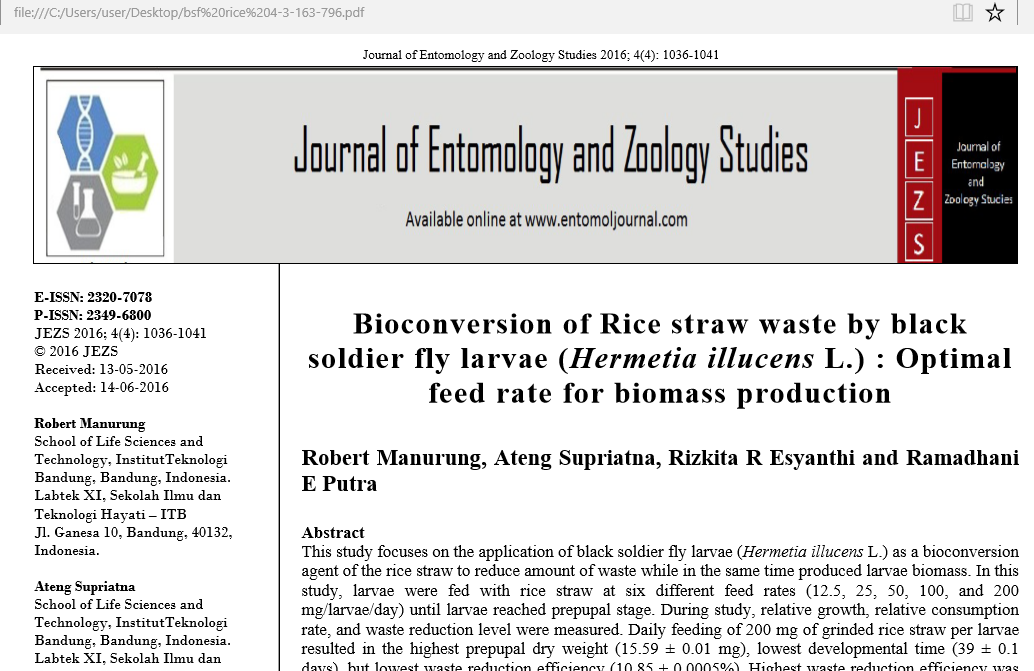
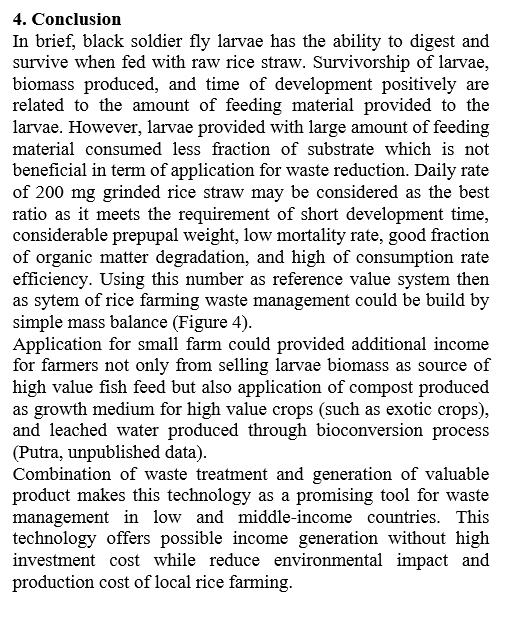
JOIN MY BSF IDEAS NETWORK & LEARN BLACK SOLDIER FLY FARMING BUSINESS
The above is why I’m keen to get as many who are READY to take sustained practical action to use what they learn to start their own farm based BSF colony, to join my network (click here to send me your request NOW) as access my growing compilation of learning resources. This is in addition to gaining access to the contact details and solutions offered by the BSF experts I’ve narrowed down to.
Especially noteworthy is the latest expert, based out of Nigeria’s Port Harcourt, who I’ve now teamed up with based on an 80% Barter Exchange arrangement to provide low to zero cost BASIC BSF Farming training for members of my BSF network, in return for having me handle develop and implement a custom Web Marketing System to help him achieve greater marketing reach and impact via name and brand recognition.
Click here learn more about my BSF Ideas Network and how to become a member.
RELATED ARTICLES:
